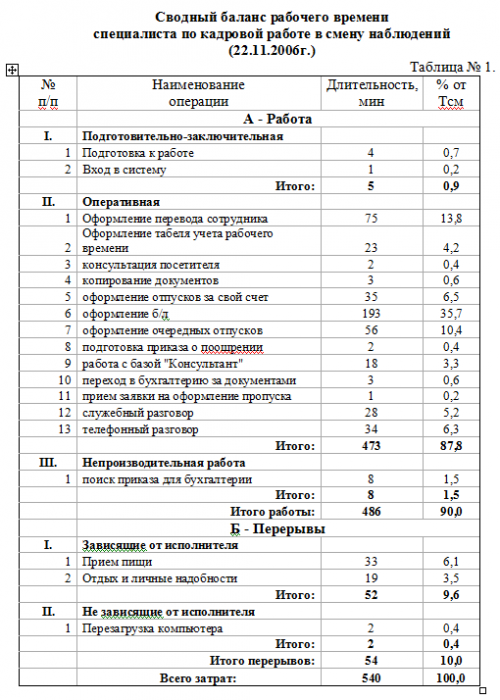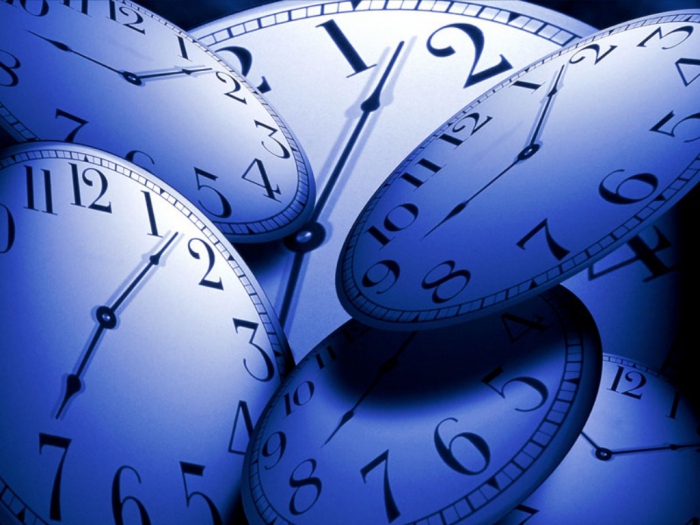Timing of working time is a technology for studying various time costs by measuring and fixing the duration of the actions to be performed.
What is he like?

Timing includes a description of the working system, and in particular the production technology, working conditions and method, and also determines the relative amount, degree of effectiveness, influence parameters and actual time for various stages of the work process. After that, the actual time is already directly estimated in order to determine the required time for the various stages of the process, and this represents the main goal, which carries the timing of working time.
Together with other methods of studying the working process, timing depends quite strongly not only on the type of work tasks being studied, but also directly on the purpose of the study. Thus, for example, if the planned time, which was determined by the timing of working hours, should be used in the current system of remuneration to accurately determine the salary, then in this case the requirements for timing will be different from those situations when the time data is determined in order to calculate the load level of the means available for production. In addition, it is important to keep track of the frequency of use of the information received.
Other options
Other timing options already depend on other conditions:
- Timing of working time determines the time regarding a particular person.
- The time that is determined as a result of the timing is used for further management, including control and accurate calculation of employee salaries.
- Timing should be carefully planned in such a way as to ensure the possibility of using its results for a detailed calculation of the planned time.
At the same time, working hours, a sample of which can be seen in modern companies, provides for careful recording of the results of the monitoring. For this, the person who is responsible for collecting information has a specialized device for measuring time, as well as corresponding sheets.
What to consider
The protocol, which includes the timing of working hours (a sample of this document or any other format) must be reproducible. Various concomitant circumstances in which the measured values were obtained should also be taken into account as parameters of the influence of time values. If the person who is responsible for recording information receives an instruction on the timing of working hours, then he should have the opportunity, using such data, to create a completely new working system that can deliver comparable results comparable to those recorded in the already used working system. If this condition is ultimately met, then we can say that the methods used for working hours are reproducible. This is an important point to consider.

These requirements are important in the first place in order to answer the basic questions, which includes timing of working hours. An example of such questions:
- What conditions of the working system should be taken into account?
- How detailed should the various steps of the process be described?
- What time can be devoted to each separate stage of the process?
Why is this needed?
When determining the purpose of use in parallel with the capabilities mentioned above, it is first necessary to determine whether the selected timing system will be evaluated to determine the planned time values. In addition, in most cases, the timing of working time, an example of which can be observed in modern companies, makes sense only if the process under study is organized in such a way that in the future it will already occur with the same production option, labor technology and the same conditions .
Carrying out the timing, it is necessary to carry out various regulations and, in particular, inform the relevant persons. After that, before conducting timekeeping of the working time of a nurse or any other employee, it will be necessary to determine how exactly the time measurement will be carried out, as well as which tools will be used. In most cases, these issues are freely resolved in advance. At this stage, it is quite important to prepare a time sheet, including carefully filling out its front side. During serial operation on the reverse side, various stages of production can already be added, for which time values are determined.
Requirements and Rules
Regardless of whether the timekeeping of working hours of a nurse, accountant or any other employee is carried out, a certain number of requirements and rules must be taken into account:
- The observer must have sufficient qualifications to separate and describe the process in detail. In addition, he must fully master the timing technique, and, if necessary, be able to assess the degree of effectiveness.
- Carrying out the timing of working hours, the observer should be positioned in such a way as to have the minimum possible impact on the employee whom he is observing, and, therefore, not to interfere with his performance of his duties. But at the same time he should have a good overview of the entire work process.

- In order for timekeeping and photography of working hours to be carried out continuously, it is necessary to exclude the possibility of discussions with those people who are being monitored, or some other strangers to the maximum.
- It is necessary to carefully observe the terms of the collective agreement, and if necessary, also carry out the procedure in accordance with the rules of the enterprise regarding informing the management or any other production services about the timing.
- Timing of the working time of a nurse, like any other employee, should not be carried out without her knowledge. It is for this reason that any employee who will be monitored should first be made aware of what this study is for.
- Timing sheet is a full-fledged document, therefore, any corrections should be completely absent in it, and records should be carried out using specialized equipment, which eliminates the possibility of correction.
- It is necessary to ensure full compliance with safety requirements. This is especially true in situations where timekeeping of the working time of the educator or other responsible specialists is carried out.
How is this done?
Each individual stage of the measurement procedure begins with a specific initial, and ends with a final event. The latter is, accordingly, the initial event of the following. In this case, the initial event of each individual stage of the process must be specified by the beginning of the first element, and the final event is determined, therefore, by the end of the last element. As the moment of time measurement, the final action of the process step is taken.An exception to this rule is the start of timekeeping, which is the same as the initial action of the first stage.
If earlier, when the timekeeping of the working time of an accountant or representatives of other professions was carried out, all the results were both read and entered on the corresponding sheet exclusively by hand, then today specialized electronic devices that measure time are used for the same purpose.
What can be such devices?
There are several types of devices:
- Devices with which a careful measurement of the time of the studied process steps is carried out directly during the observation period.
- Image saving devices, by means of which the workflow is recorded as a film, in connection with which you can then process it and determine the exact time.

It should be noted that, regardless of the type of device, it must fully comply with the following criteria:
- High-quality ergonomics of the design, that is, acceptable weight, body, size and interface.
- The device should ensure the concentration of the observer on his main task - the observation of work processes.
- Using this device, an acceptable level of measurement accuracy should be achieved, and its inclusion or shutdown should not affect the accuracy.
Technical requirements
Among other things, to ensure the operation of electronic devices, it is necessary to ensure compliance with the following technical requirements:
- Using the device should be possible to work in the mode of hundredths of minutes.
- The volume of the installed storage device, as well as the power source of the device should provide the opportunity for continuous measurement for at least one shift.
- The device must have a warning function in case of a lack of energy. If a break occurs due to lack of energy in the device, then the data that has already been obtained in the process of its operation should not be lost.
- The device must provide for installation and use in those workplaces that are characterized by harmful working conditions, including oil surfaces, humidity, dust, temperature changes and much more.
The capabilities of the device you have purchased must be fully consistent with production costs, as well as delivery costs. Among other things, it is advisable that the device has functions for conducting multi-moment observations and, if necessary, analyzing the set time values when using these systems.

What to use?
The most common today are specialized electronic time measuring systems. In this case, measurement, registration, as well as a thorough assessment of time data are carried out using electronic systems, in connection with which there is an opportunity for:
- The most accurate ordering of data, as well as performance by process steps.
- Fully independent preservation and further preparation of this information in the evaluation process, as well as at its completion.
- A fairly quick intermediate assessment, as well as a graphical representation of the most important results in the measurement process.
- As fast as possible evaluation of the received data in accordance with predetermined criteria, eliminating the possibility of any errors.
- Further support in the development of the planned time system.
At the same time, almost any timekeeping of working hours (filling pattern) provides support for a distributed timekeeping system for group work, and also supports the multi-moment observation function.
Take a measurement

There are two main timekeeping technologies - single or progressive.
Progressive time is the time from the start of the timekeeping procedure to the end event of a particular stage of the process. If we are talking about a single measurement, then at each individual measuring point begins a completely new countdown, as a result of which the individual steps of the process are measured one at a time.
The structure, as well as the subsequent recording of information in the forms already directly depends on the sequence of the measured process steps, which are divided into several categories:
- Processes without cyclic repetition. They are standard for single production, and are often used in individual labor conditions. Separation of the entire workflow, a detailed description of its individual stages, determination of measurement points, as well as registration of the quantity and influence parameters are carried out directly in the process of timekeeping.
- Cyclical processes. After a unit of a product goes through absolutely all stages, the same process is repeated again with respect to the next unit. In this case, the separation and determination of the various measurement points is carried out before the timing starts.
- Sequential order. Unitary values of time are measured, while measurements are initially taken for all units of products at each stage of the process, and only after that it will be possible to proceed to the next stage.
- Changing order. This technology provides for the combination of the indicated sequence of stages. This may occur regularly after a certain number of cycles or may be carried out in an irregular manner.
Depending on the type of work, as well as the features that the timing of the working time has (fill pattern, see above), a specific technology is selected.






